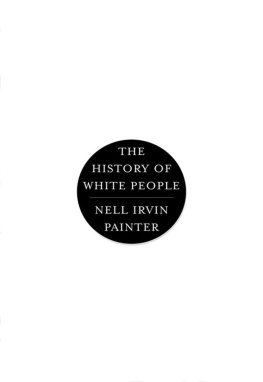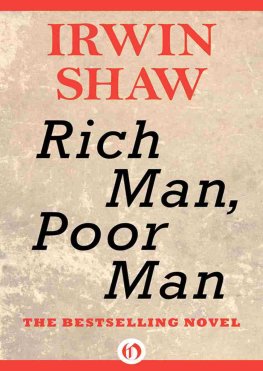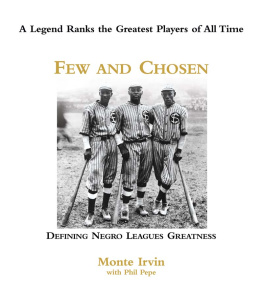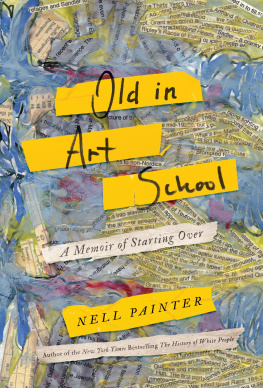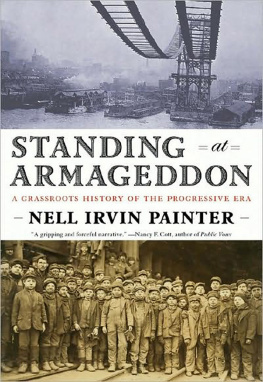SOUTHERN HISTORY ACROSS THE COLOR LINE
GENDER & AMERICAN CULTURE
Coeditors
Thadious M. Davis
Linda K. Kerber
Editorial Advisory Board
| Nancy Cott | Annette Kolodny |
| Cathy N. Davidson | Wendy Martin |
| Jane Sherron De Hart | Nell Irvin Painter |
| Sara Evans | Janice Radway |
| Mary Kelley | Barbara Sicherman |
OTHER BOOKS BY NELL IRVIN PAINTER
Sojourner Truth: A Life, a Symbol
Standing at Armageddon: The United States, 18771919
The Narrative of Hosea Hudson:
His Life as a Negro Communist in the South
Exodusters: Black Migration to Kansas after Reconstruction
Sojourner Truth, Narrative of Sojourner Truth (ed.)
Harriet Jacobs, Incidents in the Life of a Slave Girl (ed.)
2002
The University of North Carolina Press
All rights reserved
Set in Carter Cone Galliard and Mantinia types by Keystone Typesetting, Inc.
Manufactured in the United States of America The paper in this book meets the guidelines for permanence and durability of the Committee on Production Guidelines for Book Longevity of the Council on Library Resources.
Library of Congress
Cataloging-in-Publication Data
Painter, Nell Irvin.
Southern history across the color line / Nell Irvin Painter.
p. cm.(Gender and American culture)
Includes bibliographical references and index.
ISBN 0-8078-2692-8 (alk. paper)
ISBN 0-8078-5360-7 (pbk.: alk. paper)
1. Southern StatesHistoriography. 2. Southern
StatesRace relations. 3. Southern StatesSocial
conditions. I. Title. II. Gender & American culture.
F208.2 .P35 2002
975.0072dc21 2001053070
Cloth 06 05 04 03 02 5 4 3 2 1
Paper 06 05 04 03 02 5 4 3 2 1
Contents
Introduction:
Southern History across the Color Line
1. Soul Murder and Slavery:
Toward a Fully Loaded Cost Accounting
2. The Journal of Ella Gertrude Clanton Thomas:
A Testament of Wealth, Loss, and Adultery
3. Three Southern Women and Freud:
A Non-Exceptionalist Approach to Race, Class, and Gender in the Slave South
5. Hosea Hudson:
The Life and Times of a Black Communist
SOUTHERN HISTORY ACROSS THE COLOR LINE
Introduction
SOUTHERN HISTORY ACROSS THE COLOR LINE
Fruit of many years thought and living, Southern History across the Color Line points across and beyond a color line once all too solid in southern public life and still discernible in scholarship and everyday life. Preserved by residential segregation, class barriers, and the old bogey of social equality, the color line seems practically indelible. It outlasted the legal framework and institutional superstructure erected in the wake of the U.S. Supreme Courts 1896 ruling, in Plessy v. Ferguson, permitting the existence of racially separate but equal establishments. The mid-twentieth-century civil rights revolution dismantled the laws separating the races, yet two generations later, southerners of all races still must go against the grain of their culture to reach for equals outside the churches, clubs, and habit-places of their own race.
Those habit-places house intellectual production, for an all-too-firm conceptual barrier still bisects the world of scholarship. Oh, yes, much has changedthankfully. Before my time, but within the lifetime of John Hope Franklinborn in 1915 and a graduate student and young scholar during the 1940s and 1950sthe color line interfered materially with the pursuit of history. Legal segregation and traditions of unwelcome restricted the places where a historian could do research and eat lunch. Colleges segregated by race and gender offered unequal opportunities for professional advancement. Even the process of dismantling the color bar turned a black scholars presenting a paper in a scholarly meeting into a public curiosity, as John Hope Franklin discovered at a meeting of the Southern Historical Association in the late 1940s.
Most historians followed (and all too often still follow) segregations decree and wrote about the South as though people of different races occupied entirely different spheres. First, white historians made up a lily-white southern history that included no blacks, or only those blacks who loved serving whites, loved being enslaved or at least benefited from the institution, and who missed slavery after it was gone. Then, in the wake of the civil rights revolution, black historians and our allies tried to redress the imbalance by publishing the history of blacks as though white people existed only as faceless oppressors. My first book appeared in that era. My primary sourcesfull of the details characteristic of individual day-by-day experience lived according to necessity, not societys larger rulesshowed me southerners tracking across the color line. But as a beginning historian, I lacked the writing skill to present a thoroughly racialized, steeply hierarchical, utterly repressive society in which some black and white people nonetheless looked and stepped across the line. I expressed my doubts only timidly and resolved better to capture nuance in future. Nowadays more and more historians write about southerners of many races as fully realized historical actors. The old habit of writing only or mainly about white people or only or mainly about black people dies hard, but it never fettered John Hope Franklin.
In a segregated world, Franklin received accolades in abundance as the author of From Slavery to Freedom, first published in 1947 and still, after ten revisions, in print and flourishing. Franklin very rightly deserves honors for this finest and most enduring history of black Americans. He also deserves recognition for a good deal else he has written. In addition to contributing a distinguished oeuvre in American history, Franklin also thought and wrote across the color line and probed the meaning of southern history as a whole.
Segregation may have encumbered Franklins conditions of research, but it never shuttered his vision. He wrote perceptively of white as well as black southerners and of all Americans. Much more work remains to be done, especially to keep black women as well as black men in view as full-fledged southerners. But, happily, the work is well launched.
In one sense, the very fact of my writing about white southerners lofts this book across the color line. While white historians often write about black people, black historians still rarely write about whites. I regret this imbalance, if only because black historians are more likely than whites to read the vast literature of African American studies. The bibliography of this field, consisting of work by scholars from all racial-ethnic backgrounds, contains trenchant analyses of American culture from a black point of view ordinarily lacking in American scholarship. Unfortunately, the color line endures in the world of footnotes and citations and still distorts the intellectual history of African Americans and Americans generally. I lament the tendency of scholars of all races to overlook the publications of authors who were or are black.
In another, larger sense, I want to cross the color line by looking beyond color and race. I do not mean not looking at color and race. Race matters enormously and must figure in any analysis of American history, doubly so for southern history. For too long we have normalized whiteness, as though to be white were to be natural, and only those people not counted as white had racial identities. Southerner used to mean only white southerner, as though black southerners somehow were not part of the South. Along the same line, the South and the Confederacy used also to seem interchangeable, as though the only people who counted as southerners supported the Confederacy. Yes, especially in southern history, race matters a lot. But race is not all there is to life or to history. Much more remains to be said. Playing with the vogue for quantification, I used to joke that race constitutes 49 percent of a southerners human life: as the crucial factor, it counts for a plurality, but not the totality, of causes and effects. (Now that cliometrics has faded into historiographys mists, I must find another, up-to-date little formula.)


